Few stories are as timeless and captivating as the tale of the Garden of Eden. Found in the opening chapters of the Book of Genesis, this story has fascinated theologians, historians, and storytellers for centuries.
With its imagery of lush greenery, flowing rivers, and humanity’s first steps into life, the Garden of Eden continues to inspire art, literature, and spiritual reflection.
In this post, we’ll explore the story of Eden, its symbolism, and why it still resonates in our world today.
🌿 The Setting: A Paradise on Earth
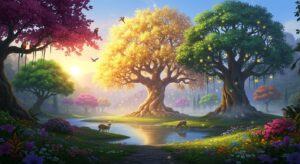
The Garden of Eden is described as a perfect paradise, planted by God as the dwelling place of Adam and Eve. According to Genesis, the garden was filled with every tree that is pleasing to the eye and good for food.
Key features included:
-
Four Rivers: The Pishon, Gihon, Tigris, and Euphrates flowed from Eden, nourishing the land.
-
The Tree of Life: Symbolizing eternal life and God’s provision.
-
The Tree of Knowledge of Good and Evil: The one tree God commanded Adam and Eve not to eat from.
This lush and abundant environment symbolized harmony between humanity, nature, and the divine.
👩🌾 The First Inhabitants: Adam and Eve
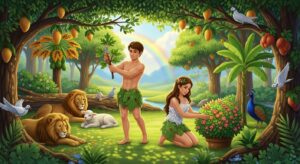
Adam and Eve were placed in Eden not only to enjoy its beauty but also to care for it. They had work tending the garden which gave them purpose while also allowing them to live in close relationship with God.
Their lives in Eden reflected innocence and freedom, unburdened by shame or fear.
🍎 The Choice: Obedience or Temptation
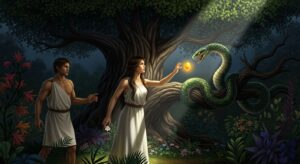
The story’s turning point comes when Eve and then Adam eat from the Tree of Knowledge of Good and Evil after being tempted by the serpent. This act of disobedience—often referred to as “the Fall”—changed the course of humanity.
Their choice represented:
-
Free Will: The ability to choose obedience or rebellion.
-
Temptation: The struggle between desire and divine command.
-
Consequence: How actions affect not just individuals, but all of creation.
🌍 The Aftermath: Life Beyond Eden
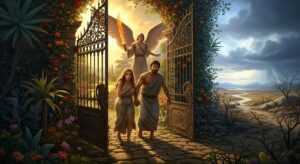
As a result of disobedience, Adam and Eve were banished from Eden. They faced toil, pain, and mortality but also the opportunity for growth, learning, and redemption.
The expulsion is often seen as both a loss and a beginning:
-
A loss of innocence and perfect harmony.
-
A beginning of human history, marked by resilience, creativity, and faith.
✨ Symbolism and Meaning
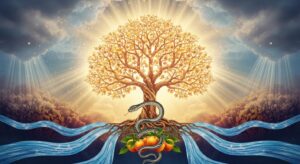
The Garden of Eden has been interpreted in countless ways:
-
Spiritually: As a symbol of God’s presence and humanity’s longing to return to divine intimacy.
-
Philosophically, As a story about moral choice, free will, and human responsibility.
-
Culturally: As inspiration for art, gardens, literature, and even modern ideas of utopia.
Its enduring power lies in its universal themes—innocence, temptation, consequence, and hope.
🌸 Final Thoughts
Paradise Found: Exploring the Story of the Garden of Eden is more than just revisiting an ancient tale.
It’s a reminder of humanity’s eternal quest for meaning, balance, and harmony with nature and the divine.
Whether you approach it through faith, literature, or symbolism, the story of Eden continues to shape how we view beginnings, choices, and the hope of restoration.
Eden may be a story of the past, but its lessons continue to inspire visions of the paradise we long to find or create today. 🌿✨